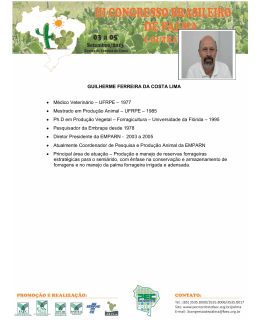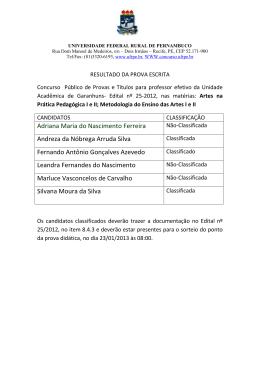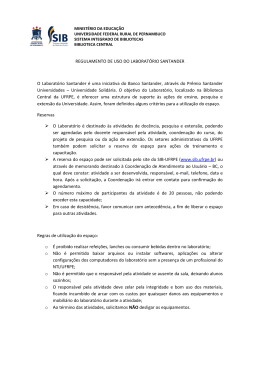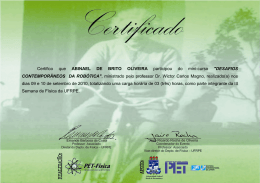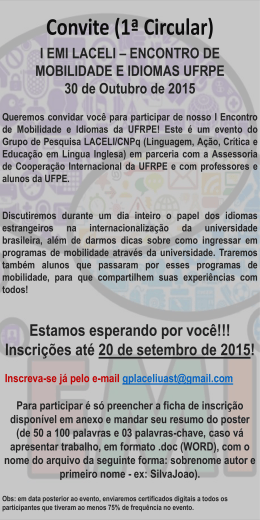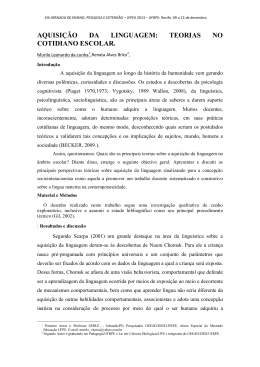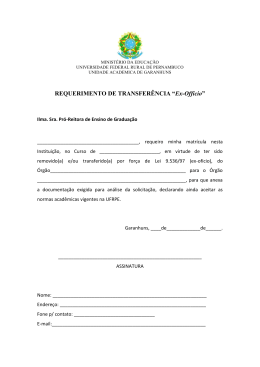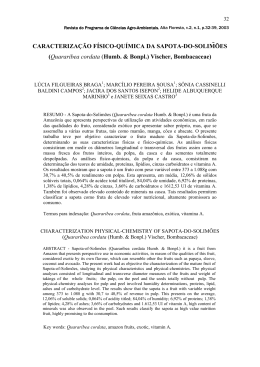Efeito do estádio de maturação dos frutos nas características físicoquímicas de acerola Rejane Jurema Mansur Custódio Nogueira, José Antônio Proença Vieira de Moraes, Hélio Almeida Burity e Josué Francisco da Silva Junior Resumo Este trabalho teve por objetivo avaliar características físico-químicas dos frutos de acerola, em três estádios de maturação. Foram usadas acerolas oriundas de duas matrizes (UFRPE 7 e UFRPE 8), durante as estações seca e chuvosa, num pomar comercial. O delineamento experimental foi o inteiramente casualizado, em esquema fatorial 2 x 3 (plantas matrizes x estádios de maturação dos frutos), e três repetições. Foram avaliados os teores de vitamina C e sólidos solúveis totais (SST), além do pH, do peso e tamanho dos frutos. As aceroleiras UFRPE 7 e UFRPE 8 produziram frutos com teores de vitamina C adequados tanto para o mercado interno como para o externo. Os frutos verdes apresentaram teores de vitamina C significativamente maiores que os maduros e semimaduros, podendo ser utilizados pela indústria farmacêutica. Houve influência sazonal nos teores de vitamina C nas características físicas (peso e diâmetros dos frutos) e físico-químicas (SST) das matrizes estudadas. O conteúdo de vitamina C foi mais elevado durante a estação seca, e decresceu com a maturação do fruto. A UFRPE 7 produziu frutos de melhor qualidade, apresentando também maior estabilidade nas características avaliadas do que a UFRPE 8. Physicochemical characteristics of Barbados cherry influenced by fruit maturation stage Abstract This work aimed at evaluating changes in physical and chemical characteristics of Barbados cherry fruits in three maturation stages. Fruits from two genetic sources (UFRPE 7 and UFRPE 8) were used during the dry and wet seasons in a commercial orchard. The experimental design was a completely randomized block with factorial scheme 2 x 3 (source plants x fruit maturation stages) and three replicates. Levels of vitamin C and of total soluble solids (TSS) besides pH and fruit weight and diameters were evaluated. Genotypes UFRPE 7 and UFRPE 8 produced fruits containing levels of vitamin C appropriated to the internal and external markets. Immature fruits showed levels of vitamin C significantly higher than mature and semi-mature ones. Those fruits could be used in the pharmaceutic industry. Seasonal influence on levels of vitamin C, physical (fruit weight and diameter) and physico-chemical (TSS) characteristics were found. Higher levels of vitamin C were observed during the dry season. These contents decreased during the fruit ripening. UFRPE 7 produced the best quality fruits and presented higher stability in most of the characteristics evaluated.
Download

